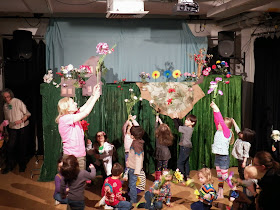Some children have difficulty in understanding how to use language in a range of different social situations and can make very inappropriate remarks.
- have problems with taking turns in a conversation or in games
- be unable to change the style of conversation to suit the listener
- be unable to interpret tone of voice in others
- have difficulty interpreting non-verbal communication (i.e. facial expression, gestures)
- have difficulty keeping to the topic of a conversation
- have problems with judging the amount of previous knowledge that the listener has when relating information
- have difficulty understanding other points of view
- have strengths in specific area of the curriculum
- have a particular interest or hobby which can sometimes act as a stimulus to learning
- have a good memory for rote learning.
2013
Activities to develop social communication skills:
- Role play – adults and other children model social situations at home, shopping, etc.
- Puppets – adults and children model social situations through puppet plays and stories.
- Take part – children with social communication difficulties are encouraged to take an active part in both role play and puppet activities after watching modeled situations.
- Tell me – children are asked to talk about personal experiences. Subtle adult questioning should ensure that a child keeps to the topic and gives relevant background information.
- Making faces – miming activities, specifically teaching children how to show feelings through facial expression. This could be part of miming scenes from well-known stories (e.g. the three little pigs being frightened of the wolf).
- Board games – these involve turn-taking.
- Parachute games –these involve collaboration and need to be introduced gradually until the children can work as a team.
- Circle time – gives opportunities to develop the ability to listen to other children's points of view, even if they have difficulty in understanding them.
- Reactions – children are asked to choose a reaction, from a choice of three, to a particular social situation. Then talk about the possible consequences of each reaction.
- Speech bubbles – using well-known story characters. Adult reads loud a scene from a story and then asks children to write, in the speech bubble, what the character might say at the end of the scene.
- Just a minute – children are asked to talk about a particular subject for one minute. This is good practice to keep to the topic.
- Comic strip conversations – is a well-researched and published approach to help children cope with making choices in certain social situations.
- Social stories – is a well-researched and published approach to help children cope with certain social situations that they find difficult.
By BP, 2014
Social stories
Social stories were first introduced by Carol Gray (1994). Social stories are a way of helping children, especially those with Autism, learn social skills. They are used to teach children to recognize facial expressions, body language and other social skills necessary for interacting with their peers. They aim to give children a concrete description for the very abstract things that occur in social interactions. They should be accompanied by relevant pictures. They are written specifically for a child and a situation that the child may be finding difficult. For children who may have a very literal and concrete way of understanding their world, social stories can be very useful.
References:
To read more about social stories reach for the following books and websites.
- The New Social Story Book, Carol Gray,
- Comic Strip Conversations: Illustrated interactions that teach conversation skills to students with autism and related disorders, Carol Gray,
- Writing and Developing Social Stories: Practical Interventions in Autism, Caroline Smith,
- Carol Gray’s website http://www.thegraycenter.org/ to find a list of useful publications,
- Tony Attwood’s website http://www.tonyattwood.com.au/ to find a list of useful publications on socialization,
- Sue Larkey’s website http://www.suelarkey.com/index.php?pr=Home_Page
· Social Stories
(www.lburkhart.com/chat_ideas.htm)
by Linda J. Burkhart and Caroline Ramsey Musselwhite
o Sample Sequence social Sctrips
(www.lburkhart.com/chat_scripts.htm) by Caroline Ramsey Musselwhite
(www.lburkhart.com/chat_scripts.htm) by Caroline Ramsey Musselwhite
o SocialStories,
(www.autism.org/stories.html) written by Meredyth Goldberg Edelson is for
working with people with autism.
· ABA Educational Recourses (www.abaresources.com) provides many free downloads
including Thematic Token Economy Boards
· Tin Snips (www.tinsnips.org) - a special education resource that
includes worksheets and activities for students with autistic spectrum
disorders
· Ridgit Resources (www.widgit.com/resources/index.htm) - symbol-supported learning
materials and symbol stories
· Children with Special Needs – Downloads
(http://www.childrenwithspecialneeds.com/pecsdownloads/) is a treasure chest of materials compressed (.zip) and in .pdf format,
including
(www.childrenwithspecialneeds.com/downloads/picturesymbols.html)
(www.udel.edu/bkirby/asperger/moreno_tips_for_teaching.html)
by Susan Moreno and Carol O'Neal




No comments:
Post a Comment